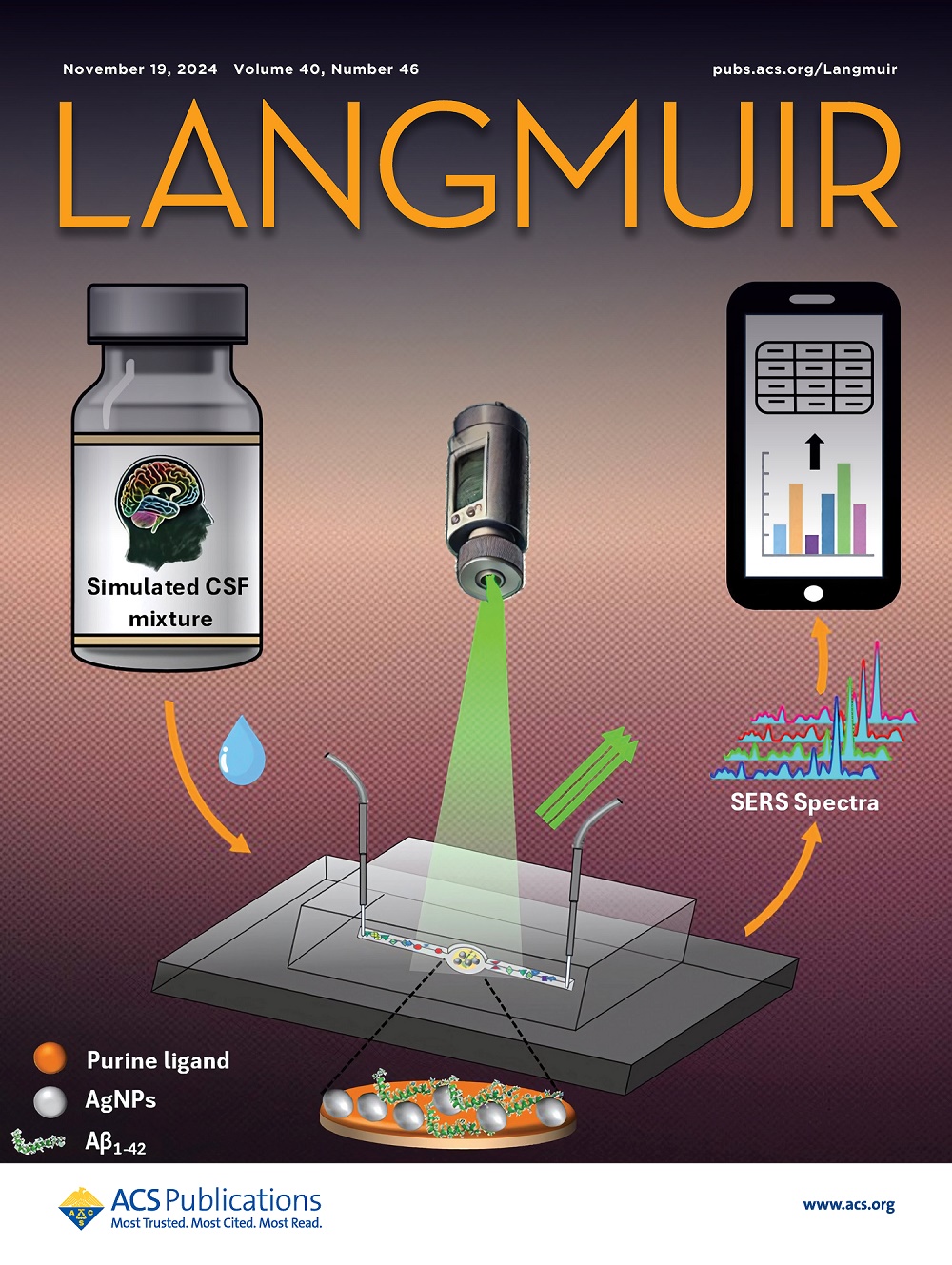介绍用于量化核酸和核酸-蛋白复合物亲水性的PARCH量表
IF 3.7
2区 化学
Q2 CHEMISTRY, MULTIDISCIPLINARY
引用次数: 0
摘要
对蛋白质进行了广泛的亲水研究,为其结构和功能提供了有价值的见解。然而,人们对核酸的三级和四级结构(如脱氧核糖核酸(DNA)和核糖核酸(RNA))及其与蛋白质的相互作用的亲水性了解甚少。在这项工作中,我们将我们最近开发的在亲水性(PARCH)量表上分配残基特征的方案扩展到核酸和核酸-蛋白复合物。PARCH量表根据核酸残基的化学特性和地形特征量化其亲水性。DNA和RNA的PARCH分析表明,由磷酸和糖原子组成的主链比核苷酸碱基更亲水;主干的PARCH值比碱基的PARCH值高一个数量级。在DNA中,有组织的双螺旋结构的扭曲,如碱基翻转或碱基配对的改变,会增加亲水值。由于RNA具有更大的结构复杂性,它比DNA表现出更广泛的亲水值,这反映了它与水的相互作用增加。因此,根据PARCH值,平均而言,RNA比DNA更亲水。dna -蛋白和rna -蛋白复合物的PARCH分析揭示了复杂的结合模式,包括带电氨基酸残基与亲水核酸主链之间的相互作用,以及蛋白质上的疏水斑块与核酸碱基的疏水凹槽结合。这些发现突出了PARCH分析的潜力,为核酸-蛋白相互作用的基本原理提供了有价值的见解。PARCH量表有望成为推进功能性RNA和DNA片段开发的有用工具,用于未来的治疗应用。本文章由计算机程序翻译,如有差异,请以英文原文为准。

Introducing the PARCH Scale for Quantifying the Hydropathy of Nucleic Acids and Nucleic Acid–Protein Complexes
Hydropathy studies have been extensively conducted for proteins, offering valuable insights into their structure and functionality. However, there is far less understanding of the hydropathy associated with the tertiary and quaternary structures of nucleic acids─such as deoxyribonucleic acid (DNA) and ribonucleic acid (RNA)─and their interactions with proteins. In this work, we extend our recently developed Protocol for Assigning a Residue’s Character on a Hydropathy (PARCH) scale to nucleic acids and nucleic acid–protein complexes. The PARCH scale quantifies the hydropathy of each nucleic acid residue based on its chemical identity and topographical features. The PARCH analysis for both DNA and RNA reveals that the backbone, consisting of phosphate and sugar atoms, is significantly more hydrophilic than the nucleotide bases; backbone PARCH values are an order of magnitude higher than those of the bases. In DNA, distortions from the organized double-helical structure, such as base flipping or altered base pairing, increase the hydropathy values. With its greater structural complexity, RNA exhibits a broader range of hydropathy values than DNA, reflecting its increased interaction with water. Thus, based on the PARCH values, RNA is more hydrophilic than DNA on average. PARCH analysis of DNA–protein and RNA–protein complexes reveals intricate binding patterns, including interactions between charged amino acid residues and the hydrophilic nucleic acid backbone, as well as hydrophobic patches on proteins engaging with the hydrophobic grooves of nucleic acid bases. These findings highlight the potential of PARCH analysis to provide valuable insights into the underlying principles of nucleic acid–protein interactions. The PARCH scale shows promise as a useful tool for advancing the development of functional RNA and DNA fragments for future therapeutic applications.
求助全文
通过发布文献求助,成功后即可免费获取论文全文。
去求助
来源期刊

Langmuir
化学-材料科学:综合
CiteScore
6.50
自引率
10.30%
发文量
1464
审稿时长
2.1 months
期刊介绍:
Langmuir is an interdisciplinary journal publishing articles in the following subject categories:
Colloids: surfactants and self-assembly, dispersions, emulsions, foams
Interfaces: adsorption, reactions, films, forces
Biological Interfaces: biocolloids, biomolecular and biomimetic materials
Materials: nano- and mesostructured materials, polymers, gels, liquid crystals
Electrochemistry: interfacial charge transfer, charge transport, electrocatalysis, electrokinetic phenomena, bioelectrochemistry
Devices and Applications: sensors, fluidics, patterning, catalysis, photonic crystals
However, when high-impact, original work is submitted that does not fit within the above categories, decisions to accept or decline such papers will be based on one criteria: What Would Irving Do?
Langmuir ranks #2 in citations out of 136 journals in the category of Physical Chemistry with 113,157 total citations. The journal received an Impact Factor of 4.384*.
This journal is also indexed in the categories of Materials Science (ranked #1) and Multidisciplinary Chemistry (ranked #5).
 求助内容:
求助内容: 应助结果提醒方式:
应助结果提醒方式:


